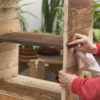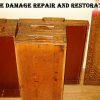Whether a piece of furniture is worn out from years of everyday use or has sustained some kind of damage, it needs to be properly restored in order to regain its beauty and functionality. Professional furniture repair and refinishing can do wonders for an old or damaged furniture item and bring it back to life – looking (and performing) better than ever. Before deciding to request furniture restoration services, however, people usually have a lot of questions concerning the nature, efficiency, and cost of the restoration process.
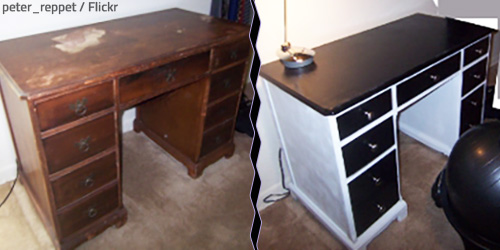
Who would have thought it possible for your old furniture to look like new again?
Here are some of the most commonly asked furniture repair questions – and their answers – to help you better understand your options and make an informed decision about your damaged furniture:
Is it worth restoring and refinishing damaged furniture?
In order to determine whether restoring a damaged piece of furniture will be “worth it”, you need to look at several important factors:
- the quality of the materials it is made of;
- the quality of the workmanship;
- the sentimental value of the furniture;
- the cost of restoration as compared to the full replacement cost of a new piece of the same quality;
- the age and origin of the furniture.
An experienced professional can restore old furniture to its original good condition for a fraction of the cost of a new piece of similar quality – unless there are some major structural issues, the restoration cost will be from one quarter to one half of the cost of replacing the piece. If the item needs only “touch ups”, the price will be even lower. So, if a damaged furniture piece is a high quality item, a part of a set, a family heirloom, or a vintage item, it is definitely worth restoring.
How to tell if a furniture piece is a quality one?
The highest quality furniture is made of solid wood. Yet, this does not mean that a furniture piece that is not solid wood is not a quality one:
-
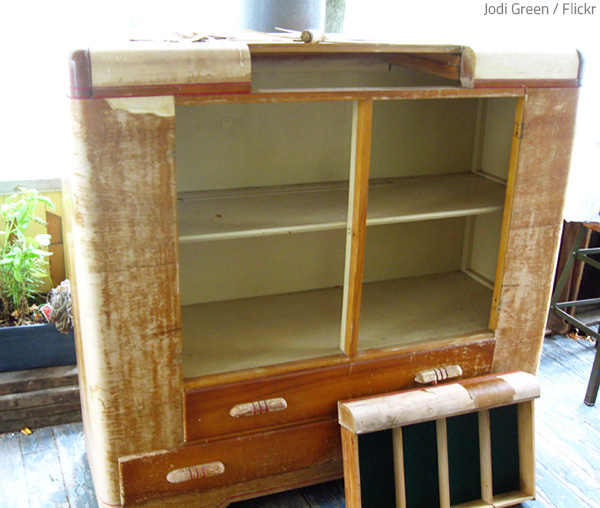
Quality furniture is worth preserving, no matter how battered it may look before the restoration.
Many fine furniture pieces are made from cheaper wood or particle board with a veneer (an outer layer) of high quality wood. Higher end furniture items have a thicker piece of veneer that allows for refinishing in the future;
- Pieces that are more than 50 years old are usually made of higher quality wood than modern furniture;
- Pieces made by notable craftsmen or manufacturers are very well-built and exquisitely designed;
- Pieces that are made more than 100 years ago are considered antiques and have great market value.
Low quality or fake wood furniture that is not worth restoring will be easy to spot – such pieces will be poorly constructed and lighter weight and will lack texture and real wood grain.
What options are there for restoring worn out furniture?
There are two different ways to restore a worn-out furniture piece, depending on the condition of the finish:
1) Top-coating
If the wear is minimal and the old finish is in a good overall condition, a new coat of finish can be applied on top of the existing one to make it look better. Keep in mind though that if the new finish and the old one are not compatible, there will either be an immediate wrinkling of the finish or a subsequent peeling of the topcoat finish.
When top-coating an existing finish, the finish color can be made darker or more opaque but not lighter or more transparent (a piece cannot be made lighter without stripping the finish off the wood).
2) Refinishing
If the finish is badly damaged, the piece will have to be stripped and completely refinished. Top-coating a chipping, peeling, or softened finish may slow the process of deterioration, but the effect will be only temporary (not to mention that, if unsuccessful, overcoating may cause an immediate reaction destroying the entire finish layer).
When stripping and refinishing furniture, the new finish can be made lighter or darker – as desired. All experienced furniture refinishing professionals are experts at matching colors, stains, distressing, and sheen, so you can rest assured that the restored piece will perfectly correspond to the color and finish of your other furniture.
Can water damaged furniture be restored?
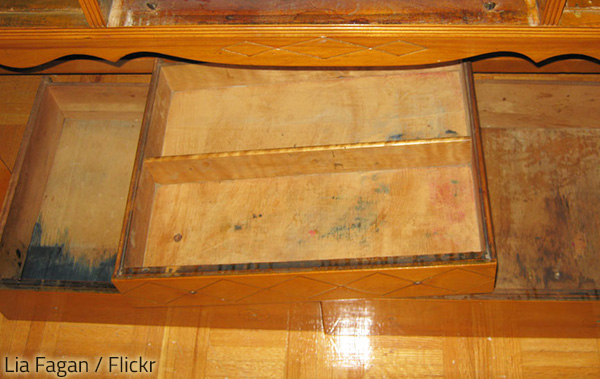
Still salvageable
Depending on the extent of the damage and the construction of the furniture, it may or may not be possible to restore a water damaged piece:
- The furniture must be dried as quickly as possible – it can be left outside to dry (if the weather permits it) or can be placed in a warm room with good air circulation (running dehumidifiers and fans will help). Make sure the temperature is right – if it is too cold, the wood piece will dry too slowly and mold will form; if it is too hot, the furniture may crack. Once the furniture is dry, the damage can be adequately assessed;
- White spots can be cleaned with an appropriate cleaning solution and the furniture can be restored on site within a few hours;
- Mold and mildew can be removed from the wood surfaces, but the affected finish will have to be stripped and the furniture coated with a new finish layer;
- Buckled or warped veneer can be repaired by experienced furniture restoration professionals who have the specialized equipment and technical knowledge to do the job;
- Rotted wood parts need to be replaced by professional furniture repair specialists.
Can fire damaged furniture be restored?
Severely burned furniture cannot be salvaged, of course, but pieces that are only slightly charred, covered in soot, and/or smelling like smoke can be fully restored:
- The furniture must be thoroughly cleaned and all soot – removed from its surface;
- Charred areas, burn stains, and soot stains must be sanded away with fine grit sandpaper. Then, a cream furniture restoration polish has to be applied over all wood surfaces;
- More severely damaged pieces must be fully refinished;
- Scorched furniture parts must be replaced.
Fire and smoke damaged furniture can be successfully repaired by furniture restoration professionals who have the advanced equipment and specialized cleaning materials, as well as the extensive training and rich experience, required to do the job in a safe and efficient manner. The experts offer smoke odor removal, smoke damage repair, furniture refinishing, and rebuilding of charred or burned furniture pieces.
Can furniture be repaired on-site?
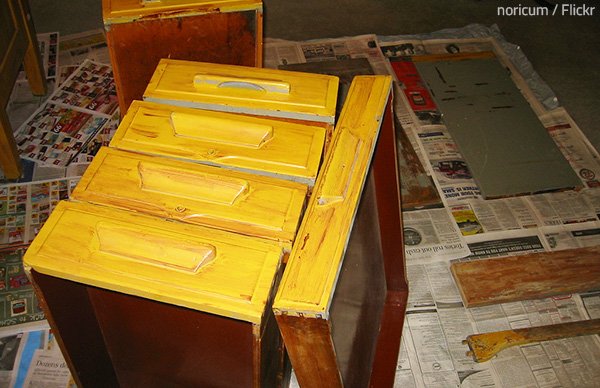
When the damage is not severe, the repairs can be performed on site.
When the damage is small and the required repairs are simple – restoring dents, re-gluing, touch-up services, etc. – the work can be done on site. Oftentimes, however, the extent of the damage requires the furniture to be repaired at an off-site facility – the necessary restoration procedures may demand the use of specialized equipment (that cannot be transported to and installed on-site), industrial strength products (that may not be safe to use in the home), or complex refinishing techniques that can only be performed in a properly equipped and secured workshop.
Can damaged furniture be reinforced to become stronger so it won’t break again?
Professional furniture restoration usually results in the item being sturdier and more stable than it was initially. The wood itself cannot be reinforced, of course, but it will be restored to its original good condition and the repaired joints will be much stronger than the old ones – and, therefore, unlikely to break again.
What’s more, the experts will repair the piece and match the colors so well that someone who has no idea that the item has been damaged will never be able to see that there was damage in the first place.
How long will it take to repair the furniture?
The typical turnaround time for furniture restoration is about 4 weeks. However, it all depends on the size and condition of the piece and the complexity of the job.
The actual time to complete a project will be determined by:
- The required type and amount of work – Minor repairs can be done for a few hours while a large, severely damaged piece may take more than a month to be properly restored. Besides, standard, simpler repairs are done much faster than intricate restoration procedures such as carving, matching decorative elements, etc.;
- The number of items the company is currently working on – While a standard restoration project usually takes about 30 days, the same project might take 45-60 days during a busy period;
- The weather conditions that may result in a shorter or longer dry and cure time.
How much will it cost to restore the furniture?
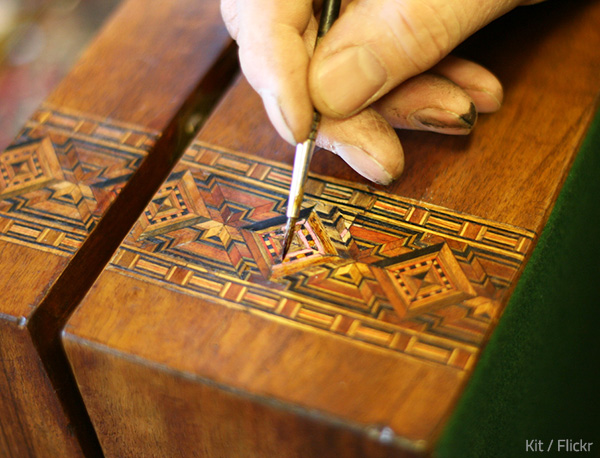
The more complex the job, the longer it will take and the more it will cost.
As already mentioned, the restoration cost depends on the extent of the damage and the complexity of the job. You’re advised to get price estimates from three or four reputable furniture restoration companies in your area, compare the offers (rates, included services, restoration methods, lead-time for completing the project, etc.), research the contractors (see below for details), and choose the professional that best suits your needs, preferences, and available budget.
Keep in mind though, that in order to give you an accurate estimate, the pros need to see the project. So, to get a quote, you need to either email pictures of the damaged furniture (together with all the relevant information) to the company or schedule an in-home appointment.
Questions to ask furniture restoration companies
Last but not least, you need to make sure that you’re leaving your damaged furniture in the hands of an experienced and trustworthy professional. Here is what to ask the furniture restoration companies you’re considering working with before making your final choice:
- Are you properly licensed and qualified for the job? What technical training and accreditation do you have? Do you belong to a professional organization?
- Can you provide references and show recommendations?
- What refinishing methods and products do you use?
- Do you make repairs on-site? If you work in my home, how are you going to protect my property and my family?
- How long will the repair take? When will I be able to use my furniture again?
- Do you pick up and deliver?
- What may incur extra charges (that are not included in the cost estimate I was provided with)?
- What methods of payment do you accept?
When you know the answers to all the above questions, you will be able to make the right choice for your damaged furniture. Just keep in mind that a well-planned and well-executed restoration will enhance not only aesthetic charm and serviceability of your furniture but its value as well.









